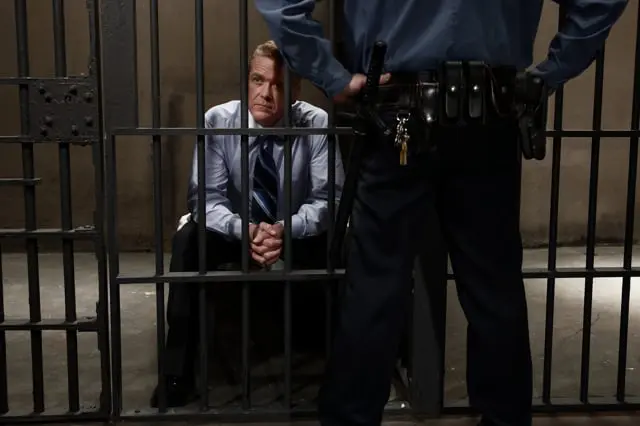La intersección de violent crimes y fianzas presents a complex landscape within the American criminal justice system. When individuals are charged with serious offenses involving violence, the process of securing pretrial release becomes significantly more challenging and contentious. The bail system, designed to balance public safety with the constitutional rights of the accused, faces heightened scrutiny and debate when dealing with cases of violent crime. This article delves into the intricacies of bail bonds for violent offenses, exploring the legal, social, and ethical considerations that shape this critical aspect of the criminal justice process.
At its core, the bail system aims to ensure that defendants appear for their court dates while maintaining public safety. However, when it comes to violent offenses, the stakes are considerably higher. Judges, prosecutors, and bail bondsmen must navigate a delicate balance between upholding the presumption of innocence and protecting potential victims and the community at large. The severity of violent crimes often results in higher bail amounts, stricter release conditions, or in some cases, the denial of bail altogether.
The process begins with the bail hearing, a crucial juncture where the court determines whether to grant bail and, if so, under what conditions. For violent crimes, these hearings are typically more intensive, with prosecutors often arguing for high bail amounts or pretrial detention. Factors such as the nature and circumstances of the offense, the strength of the evidence, the defendant’s criminal history, ties to the community, and potential danger to others all play significant roles in the judge’s decision.
Bail amounts for violent crimes can be substantially higher than those for non-violent offenses. While misdemeanors might see bail set at a few thousand dollars, felony violent crimes can result in bail amounts ranging from tens of thousands to millions of dollars. For instance, charges of aggravated assault, robo a mano armada, or attempted murder might see bail set at $100,000 or more, depending on the jurisdiction and specific circumstances of the case.
El papel de bail bondsmen becomes particularly critical in cases involving violent crimes. These professionals often find themselves at the center of heated debates about public safety and the rights of the accused. Bail bond companies typically charge a non-refundable premium of 10% of the total bail amount, which can be a significant sum in cases of violent crime. This financial aspect raises questions about access to justice and the potential for a two-tiered system where wealth determines pretrial freedom.
For defendants accused of violent crimes, securing release through a bail bond can be challenging. Many bail bond companies are hesitant to take on high-risk cases, fearing the potential financial loss if the defendant fails to appear in court. Those that do often require substantial collateral beyond the standard premium, such as property deeds or vehicle titles. This additional layer of financial security reflects the increased risk associated with violent crime cases.
The debate surrounding bail for violent crimes extends beyond individual cases to broader policy discussions. Bail reform movements across the United States have gained momentum in recent years, with advocates arguing that the current system disproportionately affects low-income individuals and communities of color. However, when it comes to violent crimes, these reform efforts often face significant pushback from law enforcement, victims’ rights groups, and segments of the public concerned about community safety.
One of the primary arguments for maintaining high bail or denying bail in violent crime cases is the potential threat to public safety. Prosecutors and victims’ advocates often contend that individuals accused of serious violent offenses pose a significant risk to the community if released. This concern is particularly acute in cases of domestic violence, where the victim may be at immediate risk if the accused is released.
On the other hand, defense attorneys and civil rights organizations argue that pretrial detention can have severe consequences for defendants, regardless of the charges they face. Extended jail stays can lead to job loss, housing instability, and disrupted family relationships, potentially pushing individuals deeper into the criminal justice system. Moreover, they argue that pretrial detention can impede a defendant’s ability to prepare an effective defense, potentially leading to wrongful convictions or coerced plea deals.
The use of risk assessment tools has become increasingly common in bail decisions for violent crimes. These algorithmic tools aim to predict a defendant’s likelihood of reoffending or failing to appear in court based on various factors such as criminal history, age, and community ties. While proponents argue that these tools can lead to more objective and consistent bail decisions, critics raise concerns about potential biases embedded in the algorithms and the risk of perpetuating systemic inequalities.
In some jurisdictions, specialized violent crime courts have been established to handle cases involving serious offenses. These courts often have dedicated judges, prosecutors, and support staff with expertise in handling complex and sensitive cases. The bail process in these specialized courts may involve more comprehensive evaluations of the defendant’s risk factors and potential for rehabilitation.
The impact of bail decisions in violent crime cases extends far beyond the courtroom. Communities affected by violent crime often closely watch these proceedings, with outcomes potentially influencing public perception of the justice system’s effectiveness. High-profile cases can spark intense media coverage and public debate, sometimes leading to calls for policy changes or legislative action.
Para bail bondsmen, navigating the landscape of violent crime cases requires a delicate balance of risk assessment and ethical considerations. Many in the industry have developed specialized expertise in handling high-risk bonds, implementing stringent monitoring and supervision protocols for released defendants. Some bail bond companies work closely with pretrial services agencies, offering additional support and oversight to help ensure court appearances and compliance with release conditions.
The role of technology in monitoring defendants accused of violent crimes has evolved significantly. GPS tracking devices, remote alcohol monitoring systems, and smartphone-based check-in apps have become increasingly common conditions of release. These technological solutions aim to provide an additional layer of supervision and accountability, potentially making judges more amenable to granting bail in cases that might otherwise result in pretrial detention.
The intersection of mental health issues and violent crime charges presents unique challenges in the bail process. Defendants with diagnosed mental health conditions may require specialized evaluations and treatment plans as part of their release conditions. Some jurisdictions have implemented mental health courts or diversion programs specifically designed to address the needs of individuals with mental illness who are charged with violent offenses.
The impact of bail decisions on derechos de las víctimas is a critical consideration in violent crime cases. Many jurisdictions have implemented policies to keep victims informed about bail hearings and release decisions. Some states have even passed laws allowing victims to provide input during bail proceedings, either through written statements or in-person testimony. Balancing these victim rights with the constitutional protections afforded to defendants remains an ongoing challenge for the courts.
International comparisons provide interesting perspectives on handling bail for violent crimes. Many European countries, for instance, rely less heavily on cash bail and more on supervised release programs. Some jurisdictions have abolished cash bail entirely, focusing instead on risk assessment and community-based supervision. These alternative models offer potential insights for policymakers and criminal justice reformers in the United States.
El papel de negociación de clemencia in violent crime cases adds another layer of complexity to the bail process. Defendants held in pretrial detention may feel pressured to accept plea deals, even if they maintain their innocence, simply to secure release. This dynamic raises serious questions about the fairness of the justice system and the potential for coerced guilty pleas.
Recent years have seen increased scrutiny of the commercial bail bond industry, particularly its role in cases involving violent crimes. Critics argue that the profit motive inherent in the bail bond system can lead to perverse incentives, potentially prioritizing financial considerations over public safety or justice. Some jurisdictions have moved to restrict or eliminate the use of commercial bail bonds, relying instead on government-run pretrial services programs.
The COVID-19 pandemic has added new dimensions to the debate surrounding bail for violent crimes. Concerns about virus transmission in crowded jails have led some jurisdictions to reevaluate their pretrial detention policies, even for serious offenses. This has sparked heated debates about balancing public health considerations with community safety concerns.
El papel de social media and digital evidence in violent crime cases has become increasingly significant. Prosecutors may argue that a defendant’s online activity or social media posts indicate a heightened risk of violence, potentially influencing bail decisions. Conversely, defense attorneys might use social media evidence to demonstrate community ties or support systems that could justify release.
The impact of bail decisions on racial disparities within the criminal justice system remains a pressing concern, particularly in cases involving violent crimes. Studies have shown that Black and Latino defendants are more likely to be held on pretrial detention and face higher bail amounts than white defendants charged with similar offenses. Addressing these disparities has become a focal point for many bail reform efforts.
El papel de bounty hunters in the apprehension of defendants who fail to appear in court adds another layer of controversy to the bail system, especially in violent crime cases. While bounty hunters can be effective in locating fugitives, their activities raise concerns about accountability, public safety, and potential abuses of power.
Recent legislative efforts across various states have sought to reform bail practices for violent crimes. Some jurisdictions have implemented presumptive detention for certain categories of violent offenses, while others have expanded the use of supervised release programs as alternatives to cash bail. These legislative changes reflect ongoing efforts to strike a balance between public safety concerns and the rights of the accused.
The economic implications of bail decisions in violent crime cases extend beyond individual defendants to impact entire communities. High bail amounts can drain financial resources from families and neighborhoods, potentially exacerbating cycles of poverty and crime. Some economists argue that reforming bail practices for violent offenses could lead to significant cost savings for local governments while maintaining public safety.
El papel de justicia reparadora practices in violent crime cases presents an emerging area of interest. While traditionally associated with less serious offenses, some jurisdictions are exploring ways to incorporate restorative justice principles into the pretrial process for violent crimes. These approaches aim to address harm, promote accountability, and support healing for both victims and offenders.
La intersección de ley de inmigración and bail practices for violent crimes adds another layer of complexity to an already challenging landscape. Non-citizen defendants may face additional hurdles in securing pretrial release, including potential immigration detainers or concerns about flight risk. Balancing these considerations with constitutional protections and public safety concerns requires careful navigation by courts and bail bondsmen alike.
The impact of bail decisions on recidivism rates for violent offenses remains a subject of ongoing research and debate. Some studies suggest that pretrial detention may actually increase the likelihood of future criminal behavior, while others argue that supervised release programs can effectively reduce recidivism while maintaining public safety. Understanding these dynamics is crucial for developing evidence-based policies that balance community protection with the rights of the accused.
El papel de victim advocacy groups in shaping bail policies for violent crimes has grown significantly in recent years. These organizations often push for stricter bail conditions and enhanced victim notification systems. Their influence has led to the implementation of specialized risk assessment tools and supervision protocols designed to prioritize victim safety in bail decisions.
The impact of bail decisions on defendant mental health is an area of growing concern, particularly in cases involving violent offenses. Extended pretrial detention can exacerbate existing mental health conditions or contribute to the development of new ones. Some jurisdictions have implemented mental health screening protocols as part of the bail process, aiming to identify defendants who may require specialized treatment or supervision.
La intersección de violencia doméstica cases and bail practices presents unique challenges within the broader category of violent crimes. The cyclical nature of domestic abuse and the potential for victim intimidation often necessitate specialized approaches to bail and pretrial release. Many jurisdictions have implemented dedicated domestic violence courts with tailored bail protocols and enhanced victim support services.
El papel de community-based organizations in providing alternatives to traditional bail and pretrial detention for violent offenses is an emerging area of innovation. Some jurisdictions are partnering with local non-profits to offer intensive supervision, counseling, and support services as conditions of release. These programs aim to address underlying factors contributing to violent behavior while maintaining community safety.
The impact of bail decisions on juvenile offenders charged with violent crimes adds another layer of complexity to an already challenging issue. The juvenile justice system’s focus on rehabilitation often clashes with public safety concerns in cases involving serious violence. Balancing these competing interests requires careful consideration of developmental factors, family dynamics, and available support systems.
El papel de forensic evidence in bail hearings for violent crimes has become increasingly significant with advances in technology. DNA analysis, digital forensics, and other scientific evidence can play crucial roles in assessing the strength of the case against a defendant, potentially influencing bail decisions. However, the complexity of this evidence often requires specialized expertise to interpret accurately within the context of a bail hearing.
La intersección de gang-related violence and bail practices presents unique challenges for the criminal justice system. Cases involving alleged gang members often face heightened scrutiny due to concerns about organized criminal activity and potential witness intimidation. Some jurisdictions have implemented specialized gang units within their pretrial services departments to address these complex cases.
The impact of bail decisions on witness cooperation in violent crime cases is a critical consideration for prosecutors and law enforcement. Concerns about witness intimidation or retaliation can influence arguments for higher bail amounts or pretrial detention. Balancing these concerns with the rights of the accused requires careful navigation by courts and bail bondsmen.
El papel de public defenders in advocating for fair bail practices in violent crime cases is crucial, yet often overlooked. Overburdened public defense systems may struggle to provide adequate representation at bail hearings, potentially leading to unnecessarily high bail amounts or pretrial detention. Addressing this issue is essential for ensuring equal access to justice, regardless of a defendant’s financial means.
La intersección de abuso de sustancias and violent crime charges adds another layer of complexity to bail considerations. Many jurisdictions are exploring the use of drug treatment programs and intensive supervision as alternatives to pretrial detention for defendants with substance abuse issues. These approaches aim to address underlying factors contributing to violent behavior while maintaining public safety.
The impact of bail decisions on family reunification in cases involving violent offenses is an often-overlooked aspect of the pretrial process. Extended pretrial detention can have devastating effects on family relationships, particularly when children are involved. Some jurisdictions are exploring ways to incorporate family impact assessments into their bail decision-making processes.
El papel de pretrial diversion programs in addressing violent crime cases is an area of growing interest. These programs aim to provide alternatives to traditional prosecution for eligible defendants, often incorporating elements of restorative justice, mental health treatment, and community service. While typically associated with non-violent offenses, some jurisdictions are cautiously expanding these programs to include certain categories of violent crimes.
La intersección de gun violence and bail practices presents unique challenges, particularly in jurisdictions with high rates of firearm-related crimes. Some states have implemented specialized protocols for cases involving gun violence, including enhanced risk assessments and stricter monitoring requirements for released defendants.
The impact of bail decisions on employer rights and responsibilities is an emerging area of concern, particularly in cases involving violent workplace incidents. Employers may face difficult decisions regarding whether to allow employees charged with violent crimes to return to work while awaiting trial. Some jurisdictions are developing guidance for employers on navigating these complex situations while respecting the legal rights of accused employees.
In conclusion, the intersection of violent crimes and bail bonds represents a complex and evolving landscape within the American criminal justice system. Balancing public safety concerns with constitutional rights, addressing systemic inequalities, and incorporating evidence-based practices are ongoing challenges that require careful consideration and continuous evaluation. As debates surrounding bail reform continue, it is clear that finding equitable and effective solutions for handling violent crime cases will remain a critical focus for policymakers, legal professionals, and communities across the United States.
Website citations used for this article:
- https://www.investopedia.com/terms/b/bail-bond.asp
- https://www.aclu.org/issues/smart-justice/bail-reform
- https://www.ojp.gov/ncjrs/virtual-library/abstracts/commercial-bail-bonding-how-it-works-summary-final-report
- https://www.brennancenter.org/our-work/research-reports/challenges-advancing-bail-reform
- https://www.sevenslegal.com/criminal-attorney/bail-bail-bonds-work/418/
- https://www.mrniceguybailbonds.com/our-services/bail-bonds-for-murder-cases
- https://www.albany.edu/news-center/news/2023-scj-study-finds-states-bail-reform-law-did-not-increase-crime
- https://www.thirdway.org/memo/analyzing-cash-bail-reform
- https://www.brennancenter.org/our-work/research-reports/debunking-myths-about-bail-reform-and-crime
- https://cnytriallaw.com/navigating-the-complexities-of-bail-and-bond-processes-in-felony-cases/
- https://www.andycallifbailbonds.com/faqs/the-role-of-bail-bonds-in-the-criminal-justice-system/









